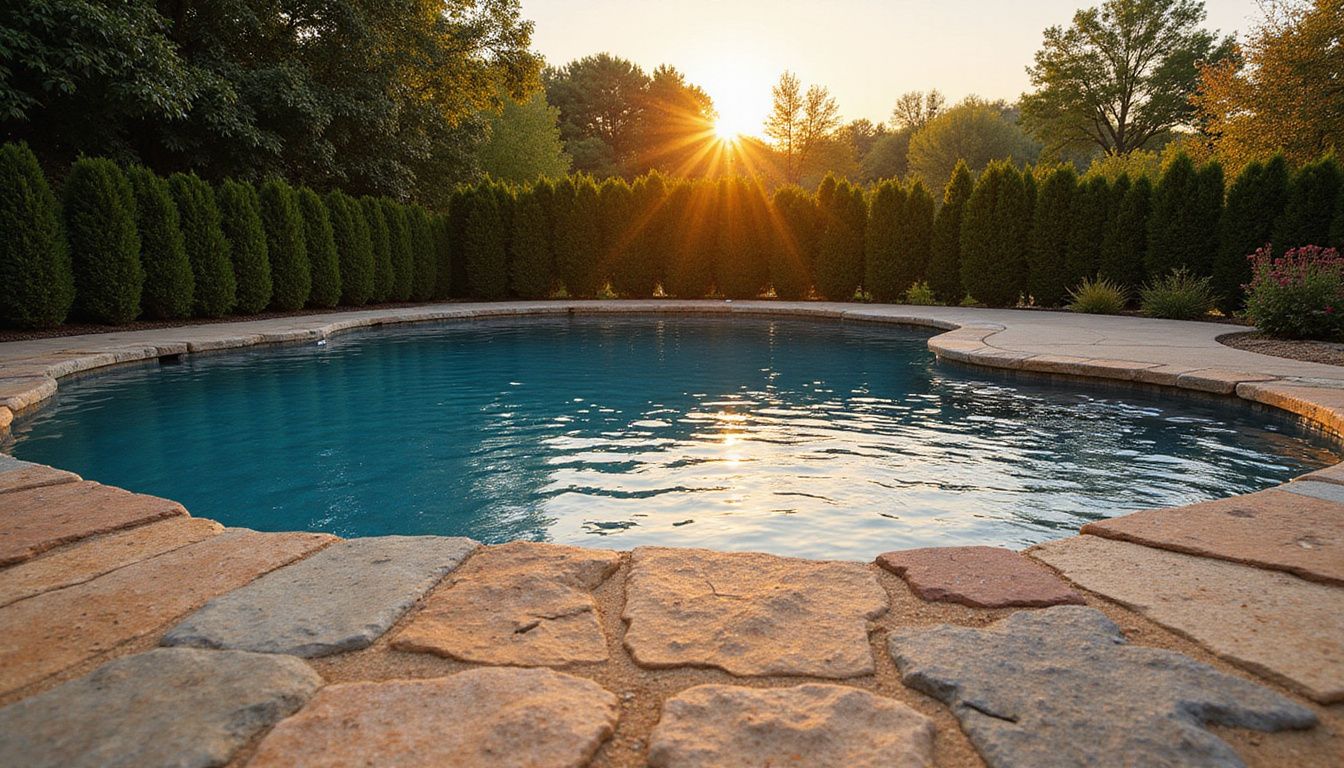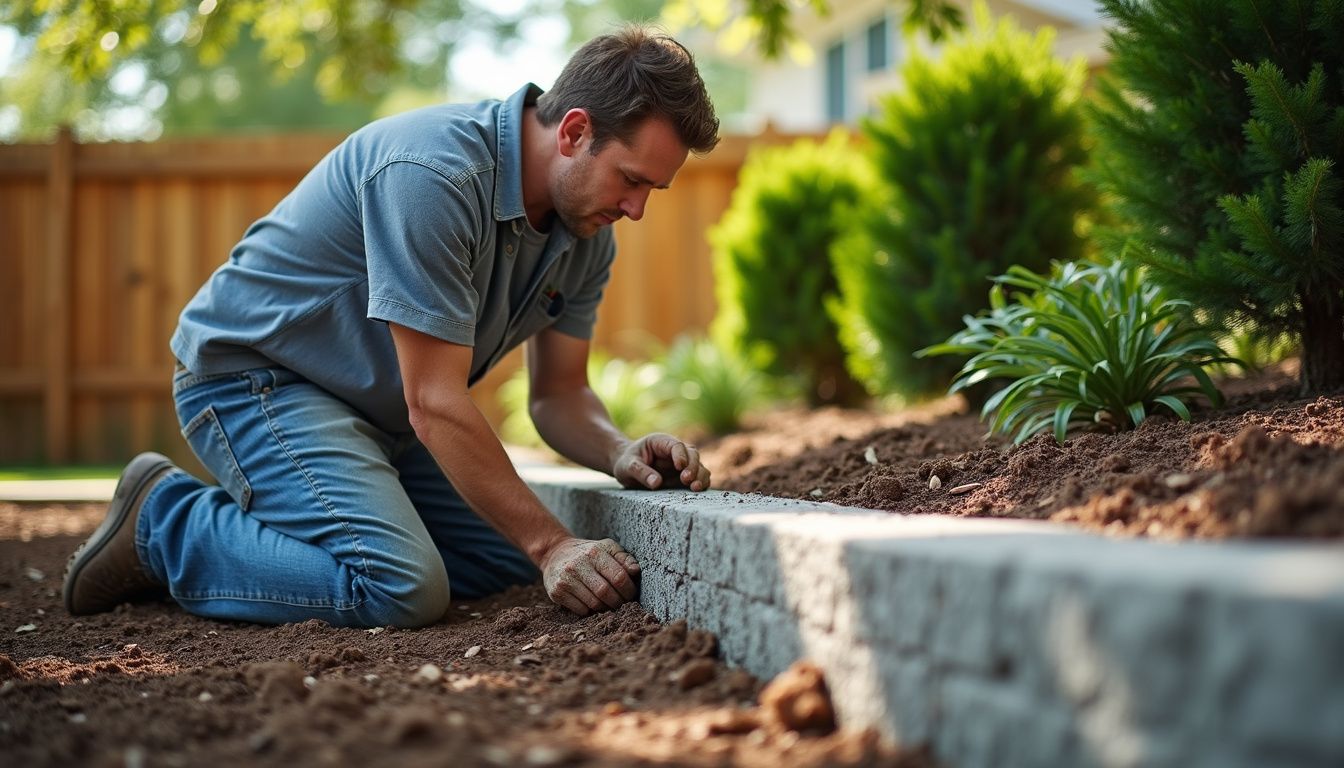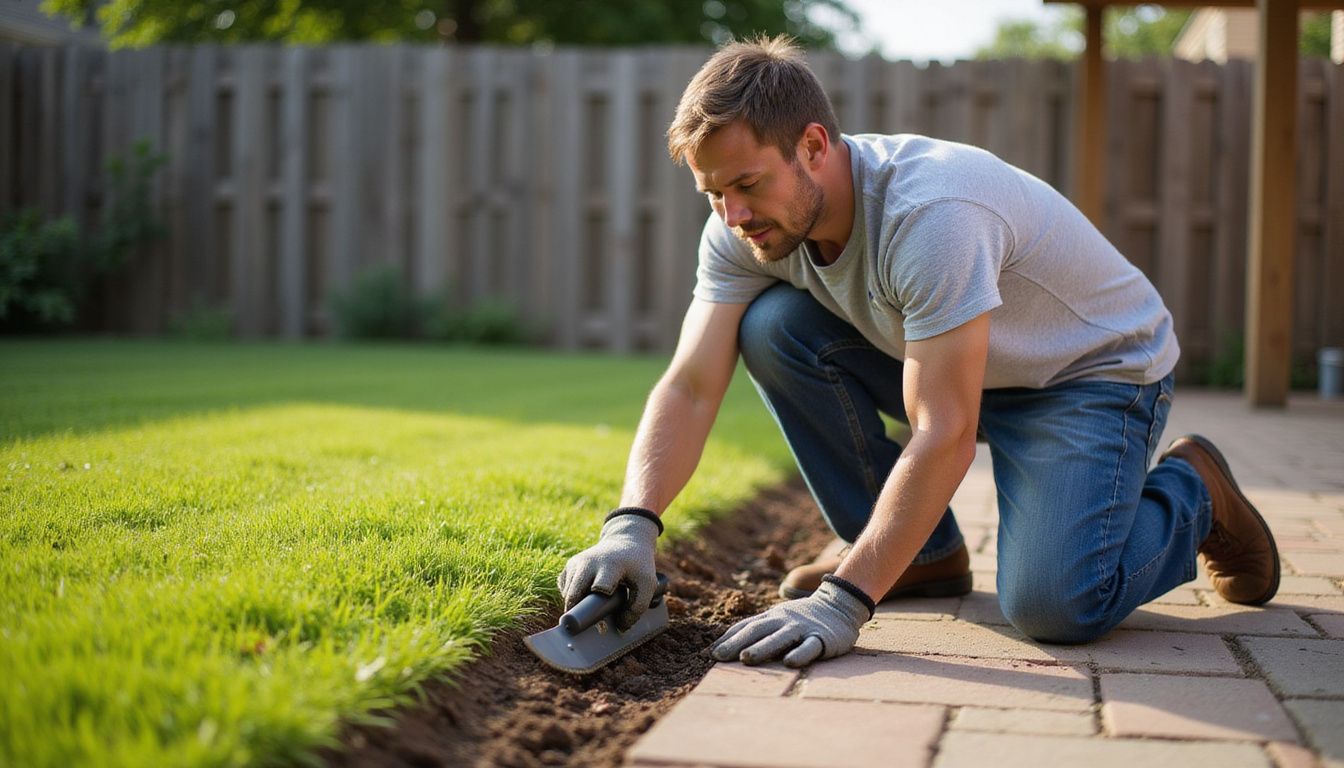Selecting the appropriate stone for pool coping presents challenges. Natural stone remains a popular option among pool owners. This article examines the top stones for pool coping and their essential characteristics.
Key Takeaways
- Natural stones like travertine, limestone, sandstone, and granite are top choices for pool coping due to their durability, beauty, and slip resistance.
- Travertine absorbs water quickly to prevent slips, while limestone offers elegance and comes in colors from soft grays to warm tans.
- Texture and surface finish impact safety and style. Rough textures like split face provide better grip, while honed finishes offer a matte look with good traction.
- Light-colored stones such as limestone stay cooler underfoot, making them comfortable for bare feet on hot days.
- Regular cleaning with gentle soap and water, plus applying approved sealants, helps maintain pool coping stones and protect them from weather and chemicals.
Why Natural Stone is Ideal for Pool Coping

Natural stone stands out as the top choice for pool coping. It offers a perfect blend of beauty and function that other materials can’t match.
Durability and longevity
Natural stone is a leading option for pool coping due to its impressive durability and longevity. These materials can withstand harsh weather conditions, including extreme heat, cold, and even freeze-thaw cycles.
Limestone and granite, for example, offer excellent resistance to wear and tear, making them ideal for pool areas that see heavy use. Their ability to endure over time means less frequent replacements, saving pool owners money and effort in the long run.
Travertine, another popular option, shows remarkable resilience against the elements. Its natural composition allows it to maintain its beauty and structural integrity for years, even in outdoor settings.
Aesthetic appeal
Natural stones enhance pool coping aesthetics. They offer a variety of colors and styles, elevating pool appearance. Homeowners have options ranging from gray, brown, or blue-gray tones in bluestone.
Reclaimed granite provides a classic appearance compatible with numerous outdoor designs. These stones integrate seamlessly with landscaping, creating a fluid transition between the pool and its environment.
Slip resistance
Slip resistance is a key factor in pool coping stone selection. It ensures safety for swimmers and loungers around the pool area. Natural stones like sandstone offer great traction, even when wet.
Surface finish plays a big role in slip resistance too. Adze and bush-hammered finishes improve grip on stone surfaces. Split or natural cleft surfaces also provide better traction than smooth ones.
These textures create tiny grooves that help feet stay put, even in wet conditions. Pool owners should pick stones with these finishes for safer poolside areas.
Popular Natural Stones for Pool Coping
Natural stones offer great options for pool coping. Let’s look at some top picks that blend style and function.
Travertine: Timeless and versatile
Travertine stands out as a top choice for pool coping. This natural stone offers a classic look that never goes out of style. It comes in a range of colors, from ivory to gold, suiting many design tastes. Homeowners can pick from different finishes like tumbled, honed, or polished to match their pool area’s vibe.
Limestone: Elegant and durable
Homeowners love limestone for its classic look and long-lasting nature. Its available in a range of soft grays to warm tans and browns. Some types even offer pink hues. New types of limestone now resist freezing, making them great for colder climates. Limestone’s natural beauty blends well with many landscaping styles.
Sandstone: Rustic and warm
Sandstone brings a rustic charm to pool coping. This quartz-based stone offers durability and slip resistance, making it a safe choice for wet areas. Its light brown or red hues add warmth to outdoor spaces. Sandstone coping can last for years with proper care and sealing.
Granite: Tough and weather-resistant
Granite boasts incredible toughness and resists harsh weather conditions. Its hard surface repels water, making it ideal for poolside use. These stones offer a mix of colors and patterns to suit different tastes. Granite’s shiny finish also adds a touch of luxury.
Key Factors to Consider When Choosing Pool Coping Stone
Picking the right stone for pool coping isn’t just about looks. It’s crucial to think about how the stone feels underfoot and how it holds up to pool chemicals and weather.
Texture and surface finish
The texture and surface finish of pool coping play a major role in both safety and design. Rough finishes like split face or natural cleft offer excellent traction, reducing the risk of slips while providing a rustic, organic look that blends seamlessly with outdoor spaces.
Sawn finishes—created by machine or hand—allow for a range of textures, from smooth to lightly grippy, giving homeowners flexible design options.
Polished finishes deliver a sleek, modern appearance but can become slippery when wet. For a safer choice, honed finishes provide a matte surface with improved slip resistance. Brushed or flamed finishes further enhance grip with added texture, making them ideal for high-traffic pool areas.
Choosing the right finish depends on your priorities—whether it’s maximizing safety, enhancing comfort underfoot, or achieving a specific aesthetic for your poolscape.
Heat resistance and comfort underfoot
Pool coping should stay cool and comfortable, especially for bare feet on hot summer days. Light-colored stones like limestone and Coral Stone naturally reflect more sunlight, helping them remain cooler underfoot.
The type and color of stone significantly affect surface temperature. Materials that reflect heat stay more comfortable, while darker, denser stones can absorb and retain heat quickly.
For the best poolside experience, homeowners should choose heat-resistant coping materials that stay cool to the touch. This not only boosts comfort but also enhances safety for anyone walking around the pool.
Maintenance requirements
Pool coping stones require regular maintenance to maintain optimal condition. Owners should frequently clean them using a gentle soap and water mixture. This practice prevents the accumulation of dirt and grime.
Applying sealant to the stones is also essential. This process safeguards them against severe weather conditions, pool chemicals, and everyday use. These products not only protect against damage but also enhance the stone’s natural hue. Certain stones, such as those with a weathered appearance, may require additional care to preserve their distinctive aesthetic.
Precast Concrete: Affordable and Stylish Alternative
Precast concrete is another solid choice for pool coping. While it’s not a natural stone, it can closely mimic the look and feel of materials like travertine, limestone, or granite. Manufacturers use molds and pigments to create textures and colors that resemble natural surfaces—often at a lower cost.
This option offers excellent versatility. Precast pieces come in consistent sizes and shapes, making installation easier and faster. It also allows for custom edge profiles, which can add a tailored look to the pool’s perimeter.
When properly sealed, precast concrete holds up well against moisture, pool chemicals, and temperature changes. It’s an ideal pick for homeowners seeking the elegance of stone without the higher price tag. With the right finish, precast coping can deliver both style and performance in any backyard setting.
Check out our post on a comparison between natural stone and precast concrete.
Conclusion
Choosing the right stone for pool coping enhances both safety and style. Natural options like travertine, limestone, sandstone, and granite offer unique benefits. Homeowners should consider factors such as texture, heat resistance, and upkeep needs.
The ideal stone balances durability, comfort, and visual appeal. With careful selection, pool owners can create a stunning and functional outdoor space that lasts for years.
FAQs
The best stone for pool coping is durable, slip-resistant, heat-resistant, and able to handle pool chemicals and weather changes well.
Natural stone often looks more elegant than concrete. It can last longer too. But it’s usually pricier.
Choose a color that goes well with your pool’s surroundings. Consider your home’s exterior and landscaping when deciding.
Yes, thickness is important. Thicker stones, about 2 inches, are stronger and less likely to crack. They also look more substantial. Thinner stones might be cheaper but may not last as long.
Recent Posts

Why Landscaping Pros Prefer Precast Concrete Over Poured-in-Place

Why & How is Precast Concrete Prestressed?

